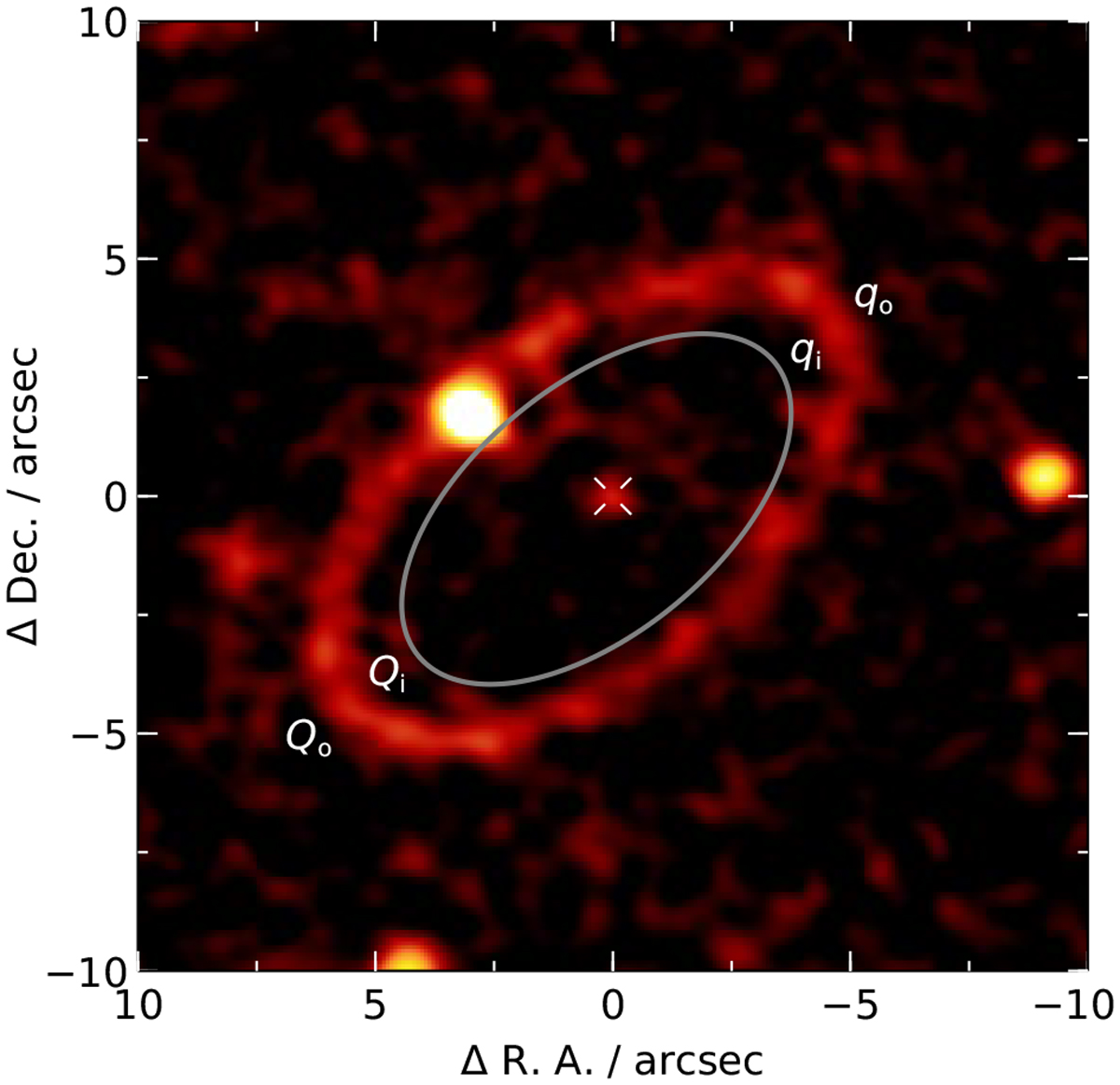Fig. 2

Download original image
ALMA Band 6 (1.3 mm) image of HD 202628 (Faramaz et al. 2019), as an example of the ALMA data used in this paper (Sect. 2.2.1). North is up, and east is left. The debris disc is well resolved and clearly eccentric, with the host star (crosshairs) offset from the geometric centre of the disc. Considering the pericentre, qi, and apocentre, Qi, of the disc inner edge, plus equivalent values qo and Qo for the outer edge, yields the minimum mass of a single planet required to sculpt and stir the disc within the system lifetime (Sects. 3.1 and 4.2). This minimum-mass planet would have the orbit shown by the grey line; alternatively, a higher-mass planet located farther inwards could also sculpt and stir the disc. It is unclear whether the bright point in the north-east part of the ring is a background object or associated with the system (Faramaz et al. 2019).
Current usage metrics show cumulative count of Article Views (full-text article views including HTML views, PDF and ePub downloads, according to the available data) and Abstracts Views on Vision4Press platform.
Data correspond to usage on the plateform after 2015. The current usage metrics is available 48-96 hours after online publication and is updated daily on week days.
Initial download of the metrics may take a while.


